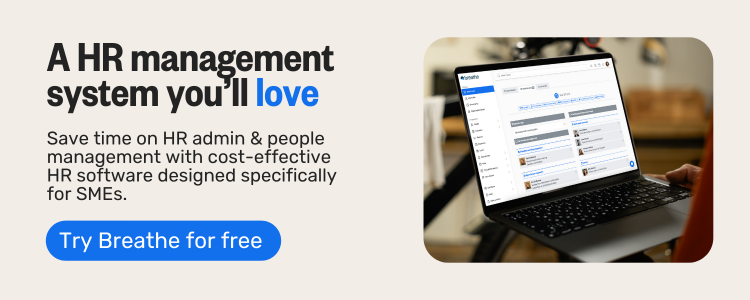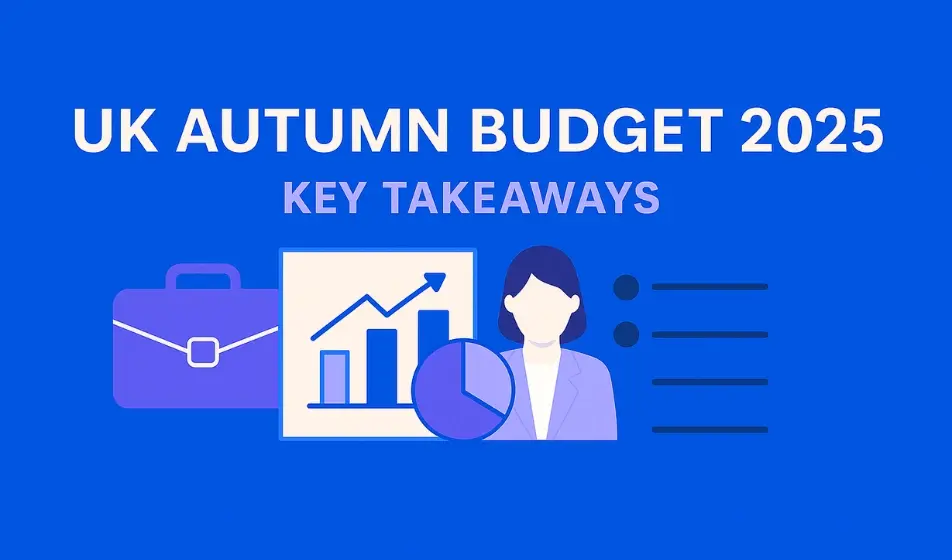When an employee raises a workplace grievance, it's important that the employer treats it with the care and attention it deserves.
Following a fair procedure and a formal procedure, as set out in the Acas Code of Practice and the employer's grievance procedure, is essential to ensure grievances are handled properly and fairly from the first instance.
If an employer fails to deal with a grievance in accordance with their formal procedure, and ensure they're dealing with grievances in line with the Acas Code and the employer's grievance procedure, it can be taken into account by an Employment Tribunal.
In the most extreme cases, compensation awarded by a Tribunal can be increased by as much as 25% to reflect any failure to abide by the Code. Legal requirements and codes of practice, including those specific to Northern Ireland, must also be considered when handling grievances. The first instance of a grievance being raised should be managed carefully before any escalation.
Skip to:
Introduction to employee grievances
When might an employee raise a grievance?
When should a grievance process be initiated?
How should a grievance be investigated?
Disciplinary and grievance procedures
Introduction to employee grievances
Let's be honest, employee grievances are going to happen in any workplace - it's just part of the territory when people feel dissatisfied or concerned about their job, working environment, or how they're being treated by their employer.
Here's the thing though: having a well-defined grievance procedure isn't just nice to have, it's essential for both you and your employees. Think of it as your clear, structured roadmap for raising and addressing complaints.
This process should be outlined in your company handbook, so everyone knows exactly how to proceed if they've got a concern.
So, what exactly do you need to know about? We're talking about raising a grievance in writing, attending investigatory meetings, and having the right to appeal any decision that's made.
When you follow these procedures properly, you can resolve disputes informally where possible, maintain positive employment relations, and reduce the risk of things escalating to an employment tribunal (trust us, you don't want that headache).
For your employees, knowing that their grievances will be dealt with fairly and consistently helps build trust and confidence in the workplace.
At the end of the day, a robust grievance process benefits everyone by promoting a respectful, transparent, and supportive working environment - and that's something we can all get behind.
When might an employee raise a grievance?
The most common grievances relate to the alleged treatment of the employee by their colleagues, such as bullying, harassing or, at worst, discriminatory behaviour.
Grievances can also be raised about pay, benefits, or compensation. In some cases, many employees may raise grievances at the same time if there are widespread issues with pay or benefits.
However, an employee may also raise a grievance about more organisational matters, such as their working environment, changes within the company, or their own terms and conditions of employment.
When should a grievance process be initiated?
Employers should have a written grievance policy which is easily accessible to employees, setting out the steps to be taken by the employee to raise a grievance.
It's well advised to include in the company’s grievance policy the option of resolving a workplace concern informally first, and without the need to invoke the formal grievance procedure.
An employer who receives a complaint but takes active steps to resolve matters quickly and amicably can potentially relieve an employee’s feelings of grief, and help avoid the situation escalating and becoming more confrontational than it needs to be.
If informal resolution doesn't resolve the issue, further action may be necessary, such as following the employer's grievance procedure to address the concern formally.
If, however, informal resolutions are not possible, or the employee wishes to raise a formal grievance from the outset, then the employer should respect that decision and follow their grievance policy accordingly.
Ideally, the employee will put their grievances in writing, with as much information as possible so the concerns can be identified and investigated accordingly. The employer must then decide whether to proceed with a formal meeting or take other appropriate steps, depending on the circumstances.
How should a grievance be investigated?
There is no ‘one size fits all’ approach when it comes to investigating grievances, because no two grievances are ever truly the same. But there are steps an employer can take to ensure a grievance is investigated as fairly as possible, with management overseeing the process to ensure workers' rights are protected. Here's what you need to know:
-
If the situation requires it, on receipt of a grievance an employer may wish to temporarily separate the employee and the person accused of certain behaviour to ensure the complainant feels able to air their concerns fully whilst remaining safe in their environment.
It should always be explained to the other person, however, that their temporary relocation or removal is not a prejudgment of guilt, but purely to enable an investigation to take its course.
For example, in a small business, the investigatory meeting might involve both the employee and the accused meeting separately with a senior manager to discuss the issues before any decisions are made;
-
The employee should be invited to attend a grievance hearing without undue delay, permitting them to be accompanied by a colleague or Trade Union representative (or even with a companion of their choice should it be reasonable to do this in the circumstances), and allow the employee to provide any further supporting evidence ahead of, or at, the grievance hearing.
This could be by way of documentary evidence or written witness statements, or even just the names of those they would like the chairperson to interview. During the hearing, the employee has the opportunity to present their case and evidence, and a worker may also have a companion present to help present their case;
-
The chairperson should be someone entirely impartial to those involved in the complaints. This could be the employee’s direct report, provided they themselves are not implicated in the grievance in any way, or it could be a manager from another department. In some cases, a senior manager may be involved, especially if the grievance is escalated or during the appeal process;
-
The chairperson should take the time to fully understand the concerns, ensuring all relevant information has been extracted from the written grievance and from the employee at the hearing, so that any further and reasonable lines of enquiry can be followed up.
It would also be wise for the chairperson to ask what particular resolution the employee is seeking to redress their concerns. Advice may be sought from a trade union representative or legal advisor to ensure the process is fair for both the employee and the employer;
-
If, on further review of key documents or witness interviews there are in the chairperson’s mind unanswered questions, or potentially contradictory viewpoints on the grievances, the chairperson should reconvene the grievance meeting with the employee before reaching a decision, asking appropriate and non-leading questions of the employee and putting to them the other evidence that exists.
This will allow the employee the opportunity to comment on any evidence that may undermine their complaint, and overall it can demonstrate an employer carrying out a more thorough and rounded investigation of the grievances. Both the employee and the employer may meet during an investigatory meeting to clarify facts and ensure all perspectives are considered;
-
The chairperson should provide a written outcome to the grievance in a timely manner, explaining in sufficient detail why each of the concerns were upheld, partially upheld, or unsubstantiated. The employer's decision should be clearly communicated, and if appropriate, the chairperson can make recommendations on what steps may be followed after the grievance outcome, such as mediation between colleagues, or a review of workplace practices or policies.
If there will be a delay to providing the grievance outcome to the employee, the chairperson should write to the employee and explain the reasons for the delay, whilst also providing some assurance on when they can expect to receive a decision.
-
The employee should be given the right to appeal the outcome. This is crucial to the fairness of any grievance process, and whilst the appeal process will not be identical to that carried out for the initial grievance, it will be similar and should follow the aforementioned steps.
The appeal chairperson, who may be a more senior manager than the person who conducted the original grievance, is responsible for deciding whether to uphold or overturn the original decision made on the evidence presented by the employee and others, and reach a conclusion on whether there were any procedural or evidential mishaps in the original grievance to overturn the conclusions reached.
Disciplinary and grievance procedures
Disciplinary and grievance procedures are absolutely fundamental to keeping things fair and orderly in your workplace. You're expected to follow your own procedures as well as the Acas Code of Practice: Disciplinary and Grievance Procedures, which sets out the standards for handling both disciplinary and grievance matters.
While disciplinary procedures typically tackle issues around employee conduct or performance, grievance procedures give your employees a formal route to raise concerns about their work, colleagues, or the organisation.
You should have a fair and accessible grievance policy in place that clearly outlines how your employees can raise grievances, what steps you'll take to investigate, and how appeals will be managed. Make sure all your employees know about these procedures and that you're applying them consistently across your organisation.
Handling grievances both informally and formally, as appropriate, helps you resolve issues quickly and maintain a positive workplace culture. Providing clear advice and support throughout the process is good practice and helps ensure that everyone feels heard and respected.
Grievance policy template
A clear and fair grievance policy helps create a workplace where people feel heard, respected, and supported.
When employees know how to raise concerns - and trust that their employer will handle them properly - it builds stronger relationships and reduces the risk of conflict or legal issues.
This template provides a simple framework your organisation can use to manage grievances in line with the ACAS Code of Practice. You can adapt it to fit your company’s size, structure, and culture, ensuring that every concern is handled consistently and with care.
This policy explains how employees can raise concerns, complaints, or problems relating to their work, colleagues, or the organisation. It is designed to support all workers in the organisation. The policy outlines how the organisation will deal with grievances in a fair and consistent manner.
Policy template
1. Scope
This policy applies to all employees of [Company Name], regardless of role, seniority, or length of service, and also applies to any worker engaged by the company, where relevant.
It covers issues such as:
- Working conditions or environment
- Terms of employment
- Bullying, harassment or discrimination
- Relationships with colleagues or managers
- Organisational changes
It does not apply to disciplinary issues, which are handled under the company’s Disciplinary Policy. This policy is non-contractual, and the process followed can be modified depending on the circumstances of each case.
2. Informal resolution
Where possible, employees are encouraged to resolve concerns informally. Dealing with concerns at this stage can often prevent escalation and foster a positive workplace environment.
You may wish to:
- Speak directly with the person involved, if appropriate
- Discuss your concern with your line manager or HR representative
Often, a quick, informal conversation can resolve issues early and prevent them from escalating.
3. Raising a formal grievance
If an issue cannot be resolved informally, or if it’s too serious to handle that way, a formal grievance should be raised in writing to bring it to the employer's attention.
Your written grievance should include:
- The nature of your complaint
- Relevant dates, times and names
- Any supporting evidence (e.g. emails, notes, witness statements)
- The outcome you're seeking
Send your grievance to [Line Manager / HR Manager] at [email address].
4. Grievance hearing
After receiving your written grievance, the company will:
- Acknowledge receipt promptly
- Appoint an impartial person to investigate and chair the grievance
- Invite you to a meeting to discuss your concerns
You have the right to be accompanied by a colleague or trade union representative at the hearing, who can help you present your case.
5. Investigation
The chairperson or investigator will gather relevant information, which may include:
- Speaking to witnesses
- Reviewing documents or correspondence
- Revisiting relevant policies or practices
- Holding an investigatory meeting to gather furthe rinformation as part of the investigation
Every effort will be made to complete the investigation fairly and promptly.
6. Outcome
You’ll receive a written outcome that:
- Summarises the findings
- States whether your grievance is upheld (in full or in part)
- Outlines any actions or next steps
- Communicates the employer's decision regarding your grievance
If you choose to appeal, the final decision will be communicated to you in writing after the appeal process is complete.
We will aim to provide you with an outcome 10 working days after your grievance hearing. However, if there is likely to be any delays, you’ll be informed in writing and given an updated timescale.
7. Appeal
If you’re not satisfied with the outcome, you can appeal in writing within [5–10] working days, stating your reasons.
Your appeal will be heard by someone not previously involved in the process. The appeal chairperson will decide whether to uphold or overturn the original decision. In deciding the outcome of the appeal, the chairperson will review all relevant evidence and procedures.
You’ll receive a final written decision following the appeal meeting.
8. Confidentiality
All grievances will be handled sensitively and confidentially. Information will only be shared with those who need to know in order to investigate or resolve the issue.
9. Monitoring and review
This policy will be reviewed annually to ensure it remains effective and compliant with employment law and ACAS guidance.
Date last reviewed: [DD/MM/YYYY]
Next review date: [DD/MM/YYYY]
Policy owner: [HR Manager / Managing Director]
*This is a template example. Should you need employment law advice, please reach out to an employment law expert from our Breathe Partner network.
Best practices for employers
Want to handle employee grievances effectively and create a workplace people actually want to be part of? Here are your key takeaways:
Start with having a clear, accessible grievance procedure that everyone can actually find and understand - get it into your company handbook and make sure it's not buried in legal jargon.
Your managers and supervisors need regular training on how to handle these situations, because let's be honest, every complaint deserves fair treatment that's consistent and legally sound.
Here's where it gets real: you need to thoroughly investigate every grievance (yes, every single one), keep your employees in the loop at every stage, and document everything properly.
Think of mediation and other dispute resolution tools as your power moves for sorting things out before they blow up into bigger problems.
When you prioritise fair procedures and open communication, you're not just ticking boxes - you're building better employment relations, reducing the chances of tribunal claims landing on your desk, and creating a workplace that's actually supportive and productive.
Make it a habit to regularly review and update your grievance procedures, and don't hesitate to get advice from HR professionals or legal experts when you need it. This keeps your organisation compliant and responsive to what your workforce actually needs.
Finally
Having a clear grievance policy isn’t just about ticking a compliance box - it’s about creating a fair, open culture where employees feel safe to speak up. When concerns are handled consistently and in line with the ACAS Code, it helps prevent issues from escalating, strengthens trust, and protects your business from unnecessary risk.
By following the steps outlined in this policy, you’ll ensure every grievance is approached with care, clarity, and professionalism - supporting both your people and your organisation’s wellbeing.
With Breathe’s HR software, you can easily store, share, and manage important workplace documents like grievance policies - all in one secure place.
-
Upload and log your grievance policy under the Documents section for easy access by managers and employees.
-
Track acknowledgements to ensure staff have read and understood company procedures.
-
Attach grievance-related documents directly to employee records, keeping your HR files organised and compliant.
-
Set reminders and updates when it’s time to review or refresh your policy.
Keeping everything in Breathe means your HR documentation stays consistent, up to date, and ready when you need it most - helping you build a more transparent and supportive workplace.
FAQs
Q: What is an employee grievance?
A: An employee grievance is a formal complaint raised by a member of staff about a workplace issue - such as treatment by colleagues, working conditions, pay, or company policies. A clear grievance procedure helps employers address these concerns fairly and consistently.
Q: What should an employer do when an employee raises a grievance?
A: Employers should follow their formal grievance procedure in line with the Acas Code of Practice. This includes acknowledging the complaint, investigating it promptly, holding a grievance hearing, and providing a written outcome - all while treating the employee fairly and objectively.
Q: Can an employee grievance be resolved informally?
A: Yes. In many cases, it’s best to try resolving issues informally first - through open discussions, mediation, or direct feedback. If that doesn’t work, the employee has the right to raise a formal grievance, which must then follow the company’s written procedure.
Q: What happens if an employer doesn’t follow the Acas Code?
A: Failing to follow the Acas Code of Practice can have serious consequences. If a case reaches an Employment Tribunal, compensation awarded to the employee can be increased by up to 25%. Following the Code ensures fairness and reduces legal risk.
Q: How can HR software help manage employee grievances?
A: HR software like Breathe helps employers store and manage grievance policies, log complaints securely, track actions taken, and keep documents in one place. This supports compliance, consistency, and transparency throughout the grievance process.
.webp)
Author: Thomas Fuller
A Law Degree graduate (LLB Hons) and CILEx Lawyer, Thomas is an Associate within Omny Law’s People Team, providing a range of employment law and litigation services to companies and individuals, as well as business immigration advice. Thomas’ experience spans over an 11-year career where he regularly appeared in the Employment Tribunal defending claims of unfair dismissal, discrimination, whistleblowing and more.







.webp)